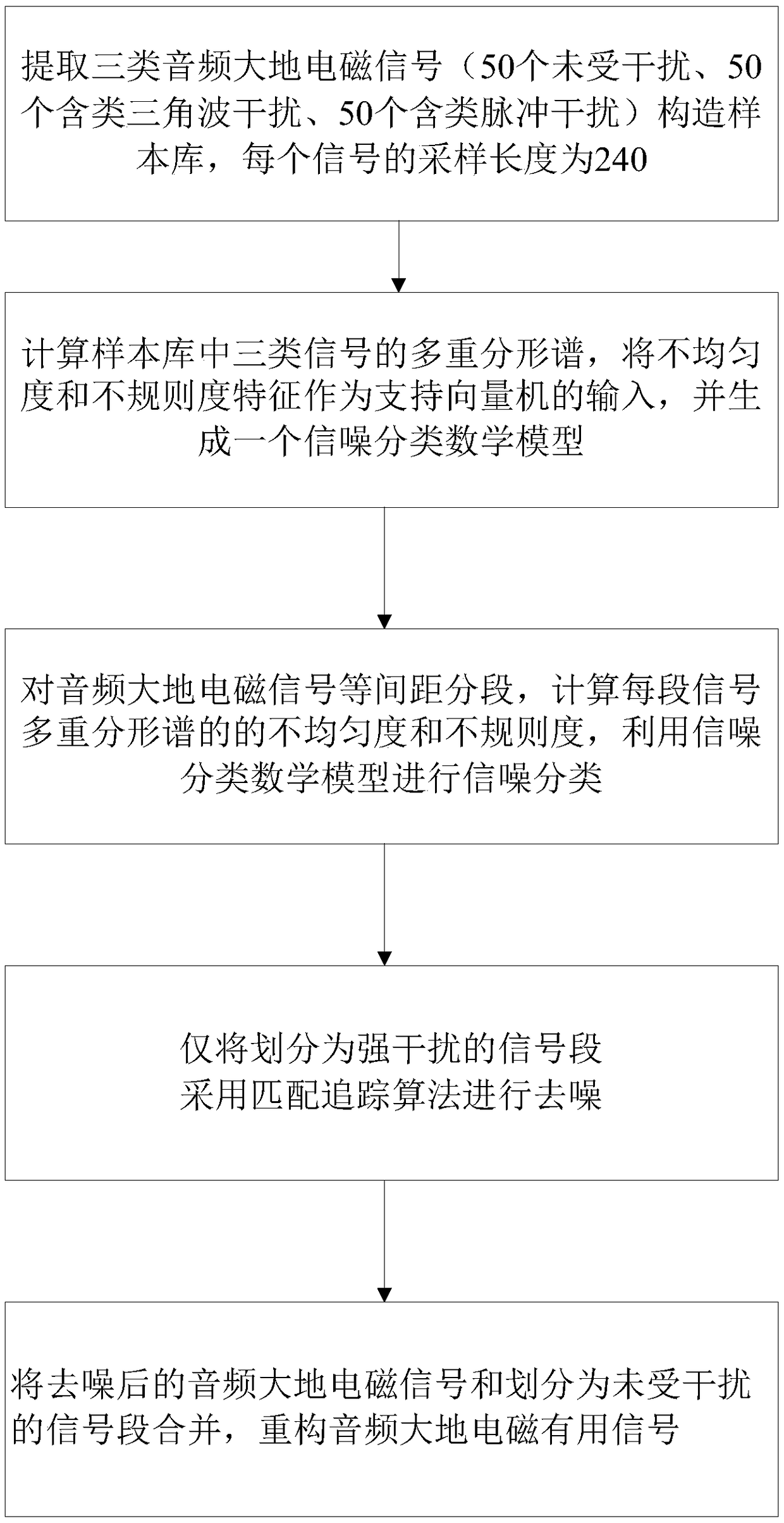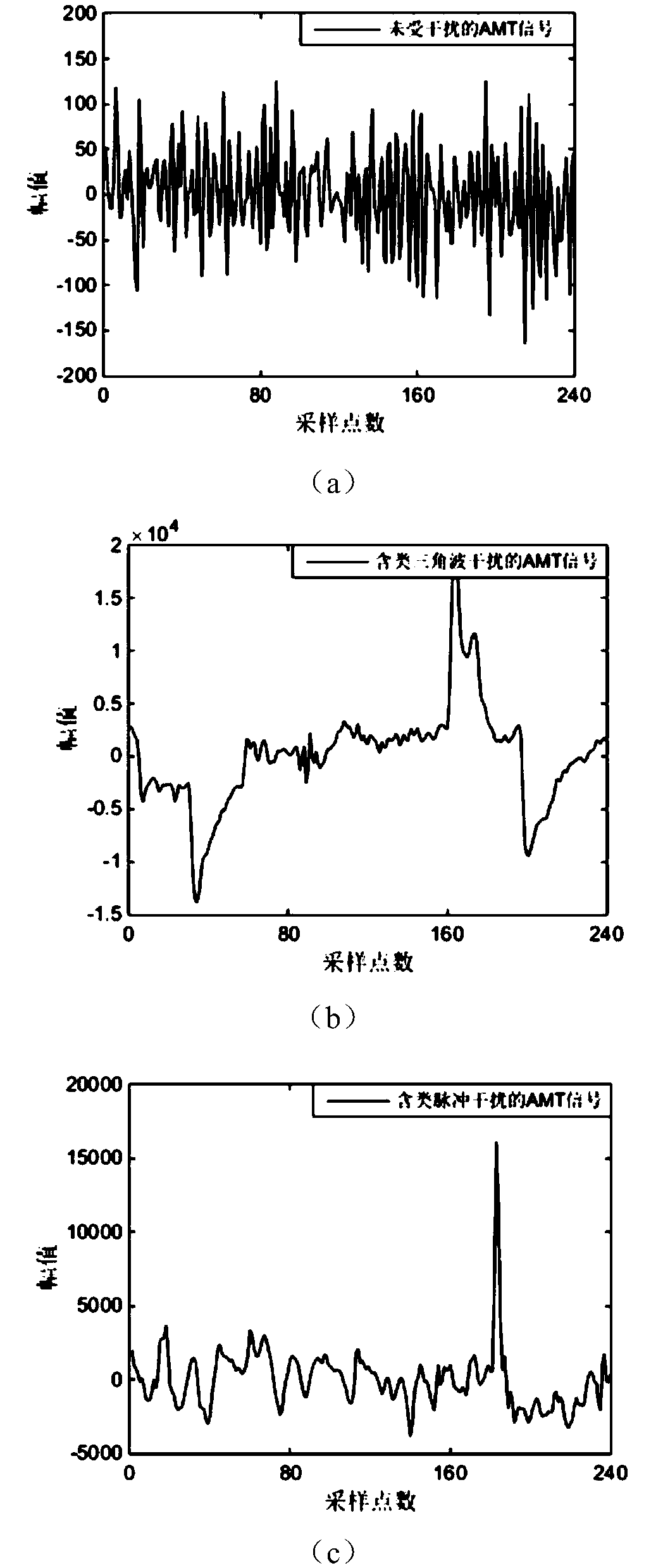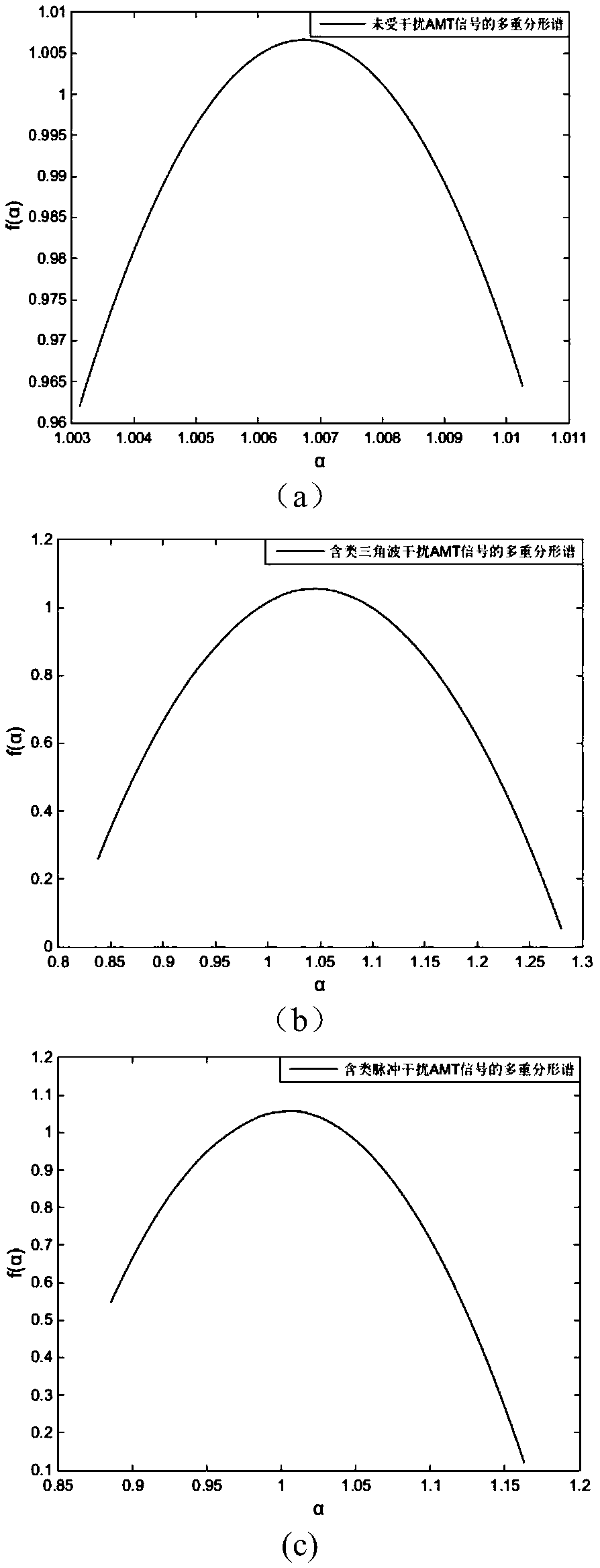Audio ground electromagnetic signal de-noising method based on signal-noise classification
An audio magnetotelluric and electromagnetic signal technology is applied in the field of electromagnetic exploration data processing to achieve the effect of improving the discrimination accuracy
- Summary
- Abstract
- Description
- Claims
- Application Information
AI Technical Summary
Problems solved by technology
Method used
Image
Examples
Embodiment Construction
[0069] The present invention will be further described below in conjunction with examples.
[0070] like figure 1 As shown, the present invention discloses an audio magnetotelluric signal denoising method based on signal-to-noise classification, comprising the following steps:
[0071] Step 1: Extract electromagnetic signal samples from the collected audio magnetotelluric signals and build a sample library.
[0072] In this embodiment, 50 undisturbed AMT signals, 50 AMT signals containing quasi-triangular wave interference, and 50 AMT signals containing quasi-pulse interference are extracted from the collected audio magnetotelluric time series to construct a sample library. The signal samples have a sample length of 240. Then, 150 samples of these three types of signals are integrated to generate a sample library, that is, 150 signal segments with a sample length of 240. In this embodiment, an undisturbed AMT signal is used as a sample of a non-strong interference signal. ...
PUM
 Login to View More
Login to View More Abstract
Description
Claims
Application Information
 Login to View More
Login to View More - R&D
- Intellectual Property
- Life Sciences
- Materials
- Tech Scout
- Unparalleled Data Quality
- Higher Quality Content
- 60% Fewer Hallucinations
Browse by: Latest US Patents, China's latest patents, Technical Efficacy Thesaurus, Application Domain, Technology Topic, Popular Technical Reports.
© 2025 PatSnap. All rights reserved.Legal|Privacy policy|Modern Slavery Act Transparency Statement|Sitemap|About US| Contact US: help@patsnap.com



